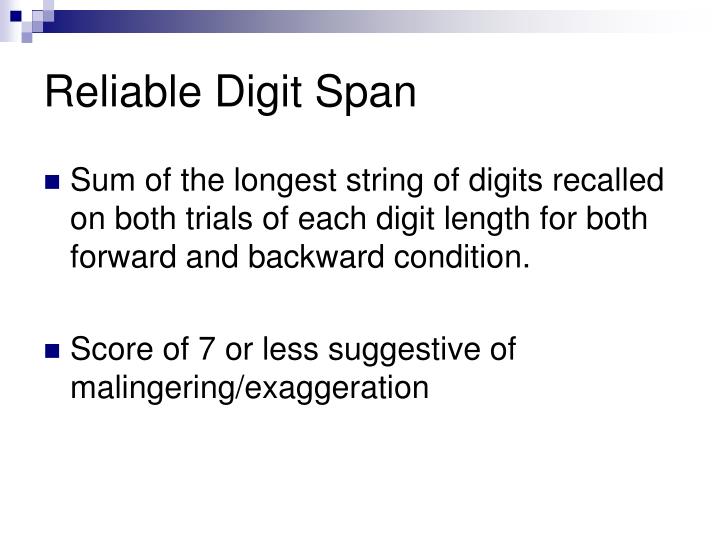

Optional post-tests include Digit Symbol - Incidental Learning and Digit Symbol - Free Recall. Given Q1B3J2, place the numbers in numerical order and then the letters in alphabetical order) Performance subtests Picture Completion Ability to quickly perceive visual details Digit Symbol - Coding Visual-motor coordination, motor and mental speed Block Design Spatial perception, visual abstract processing & problem solving Matrix Reasoning Nonverbal abstract problem solving, inductive reasoning, spatial reasoning Picture Arrangement Logical/sequential reasoning, social insight Symbol Search Visual perception, speed Object Assembly Visual analysis, synthesis, and construction given the sequence of digits '123', reverse the sequence.) Letter-Number Sequencing attention and working memory (e.g. What is a guitar?) Digit span attention/concentration (e.g. In what way are an apple and a pear alike?) Vocabulary The degree to which one has learned, been able to comprehend and verbally express vocabulary (e.g. stamps can you buy for a dollar?) Similarities Abstract verbal reasoning (e.g. What does "Kill 2 birds with 1 stone" metaphorically mean?) Arithmetic Concentration while manipulating mental mathematical problems (e.g. Who is the president of Russia?) Comprehension Ability to deal with abstract social conventions, rules and expressions (e.g.

Each subtest score is tallied and calculated with respect to non-normal or brain-damaged norms.

Others employ the WAIS-R NI ( Wechsler Adult Intelligence Scale-Revised as a Neuropsychological Instrument), another measure published by Harcourt. For example, digit span may be used to get a sense of attentional difficulties. Some neuropsychologists use the technique on people suffering brain damage as it leads to links with which part of the brain has been affected, or use specific subtests in order to get an idea of the extent of the brain damage. Intelligence tests also are used in populations with psychiatric illness or brain injury, though some regard this use as controversial.
#Digit span subtest full#
The Wechsler Abbreviated Scale of Intelligence (WASI) uses vocabulary, similarities, block design and matrix reasoning subtests similar to those of the WAIS to provide an estimate of full scale IQ in about 30 minutes. For persons under 16, the Wechsler Intelligence Scale for Children ( WISC, 6-16 yrs) and the Wechsler Preschool and Primary Scale of Intelligence ( WPPSI, 2 1/2-7yrs, 3mos) are used as alternative measures of intelligence.Ī short, four-subtest version of the battery has recently been released, allowing clinicians to form a validated estimate of verbal, performance and full scale IQ in a shorter amount of time. It is an intelligence measure that is appropriate for use with those individuals ages 16-89 years of age (this is an expanded age range for adults 74-89, reflecting the increased average life expectancy). The WAIS-III is a version of the WAIS published in 1997 and has been superceded by the current version, WAIS-IV published in 2008. This banner appears on articles that are weak and whose contents should be approached with academic caution. Please help recruit one, or improve this page yourself if you are qualified. This article is in need of attention from a psychologist/academic expert on the subject.


 0 kommentar(er)
0 kommentar(er)
